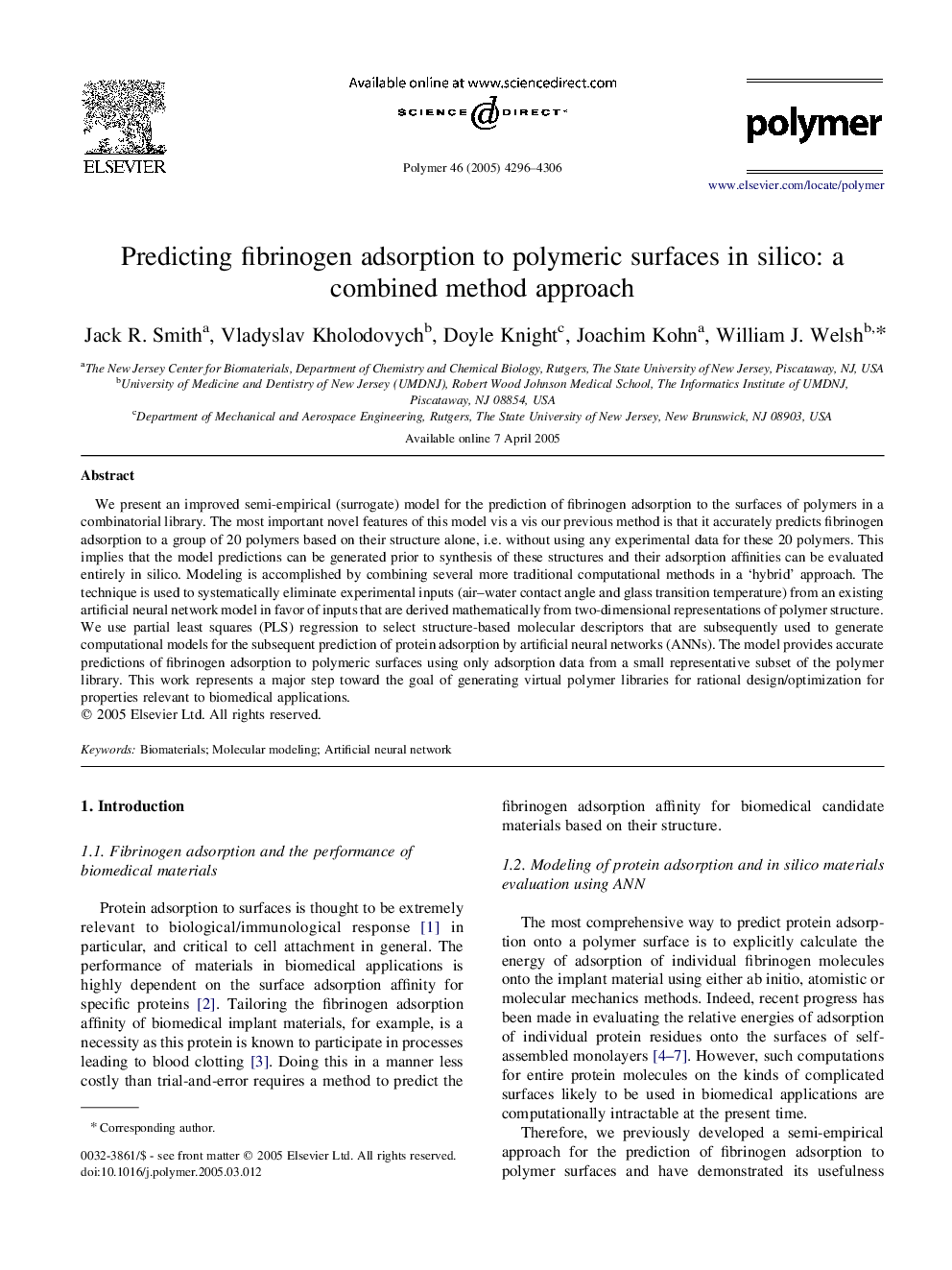| Article ID | Journal | Published Year | Pages | File Type |
|---|---|---|---|---|
| 5191881 | Polymer | 2005 | 11 Pages |
We present an improved semi-empirical (surrogate) model for the prediction of fibrinogen adsorption to the surfaces of polymers in a combinatorial library. The most important novel features of this model vis a vis our previous method is that it accurately predicts fibrinogen adsorption to a group of 20 polymers based on their structure alone, i.e. without using any experimental data for these 20 polymers. This implies that the model predictions can be generated prior to synthesis of these structures and their adsorption affinities can be evaluated entirely in silico. Modeling is accomplished by combining several more traditional computational methods in a 'hybrid' approach. The technique is used to systematically eliminate experimental inputs (air-water contact angle and glass transition temperature) from an existing artificial neural network model in favor of inputs that are derived mathematically from two-dimensional representations of polymer structure. We use partial least squares (PLS) regression to select structure-based molecular descriptors that are subsequently used to generate computational models for the subsequent prediction of protein adsorption by artificial neural networks (ANNs). The model provides accurate predictions of fibrinogen adsorption to polymeric surfaces using only adsorption data from a small representative subset of the polymer library. This work represents a major step toward the goal of generating virtual polymer libraries for rational design/optimization for properties relevant to biomedical applications.
